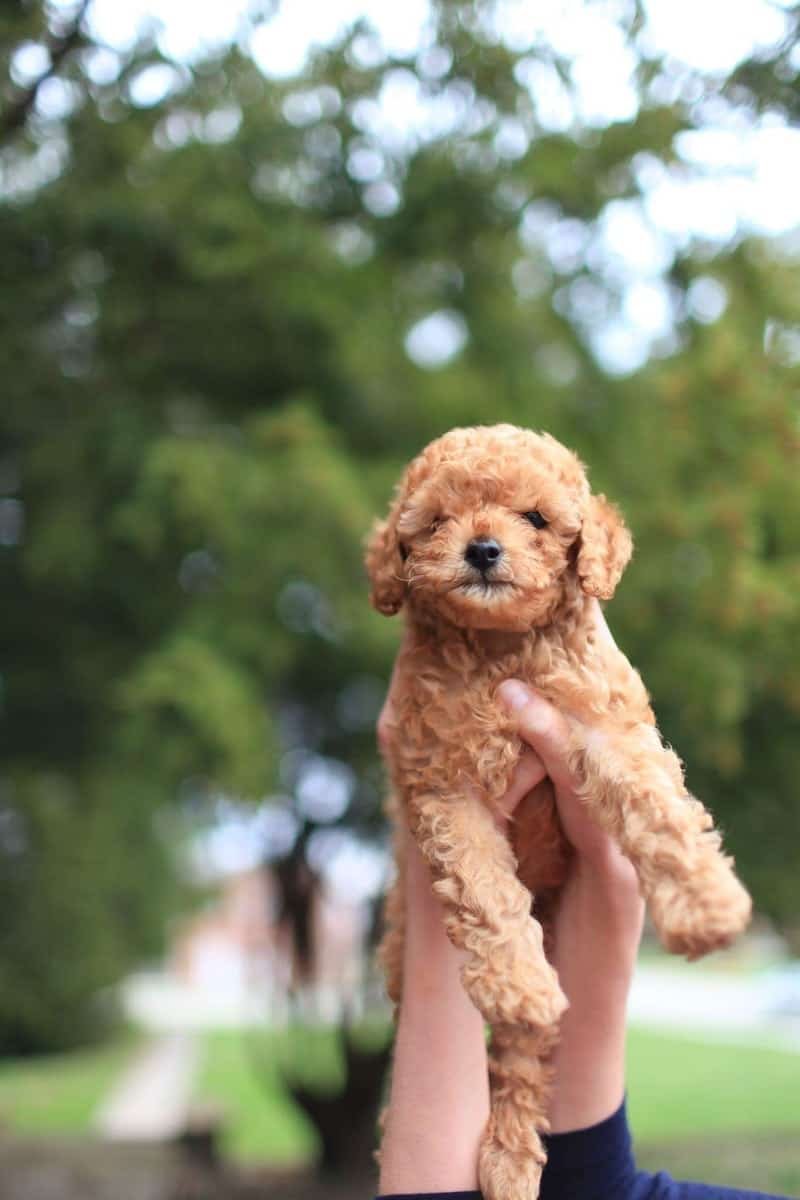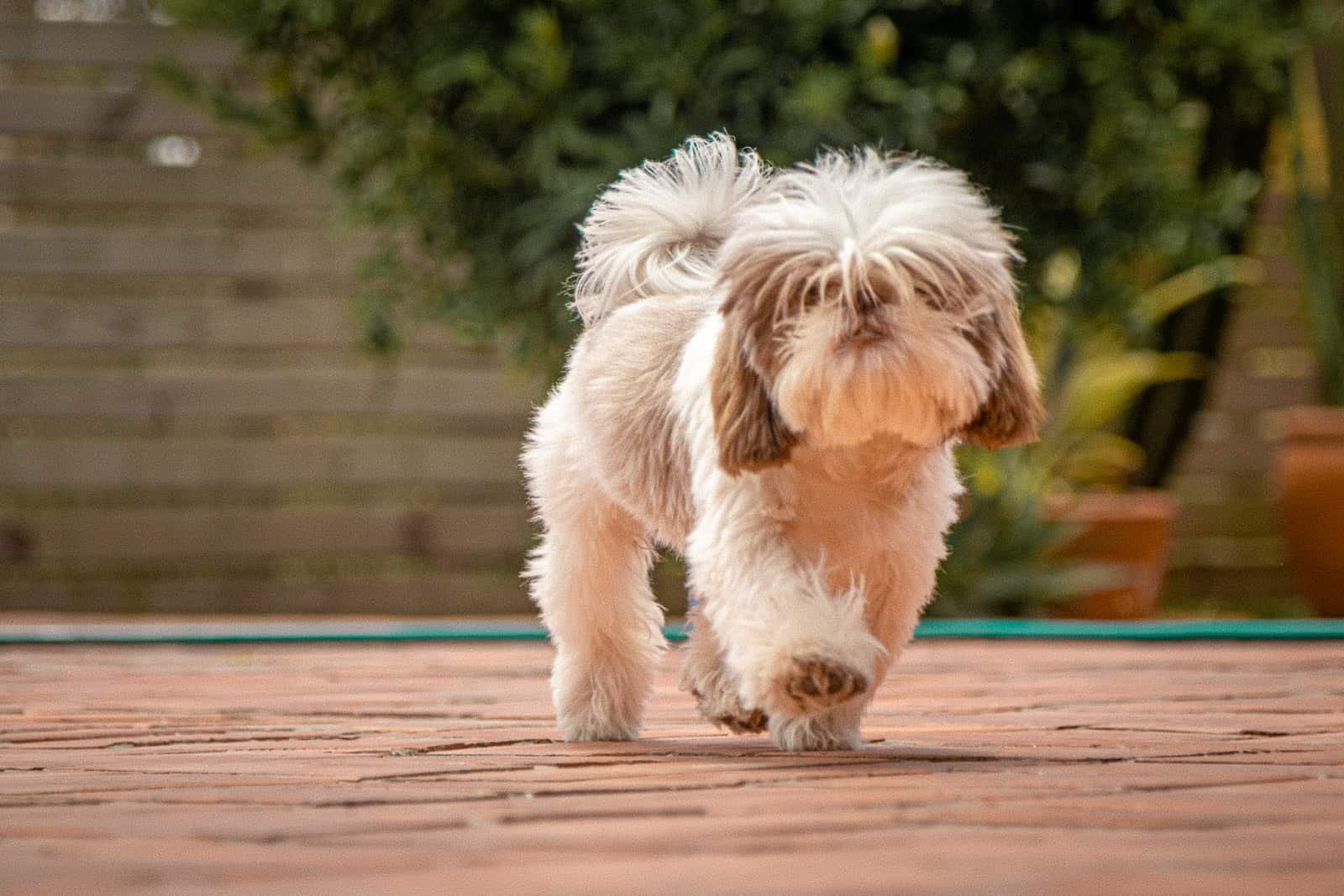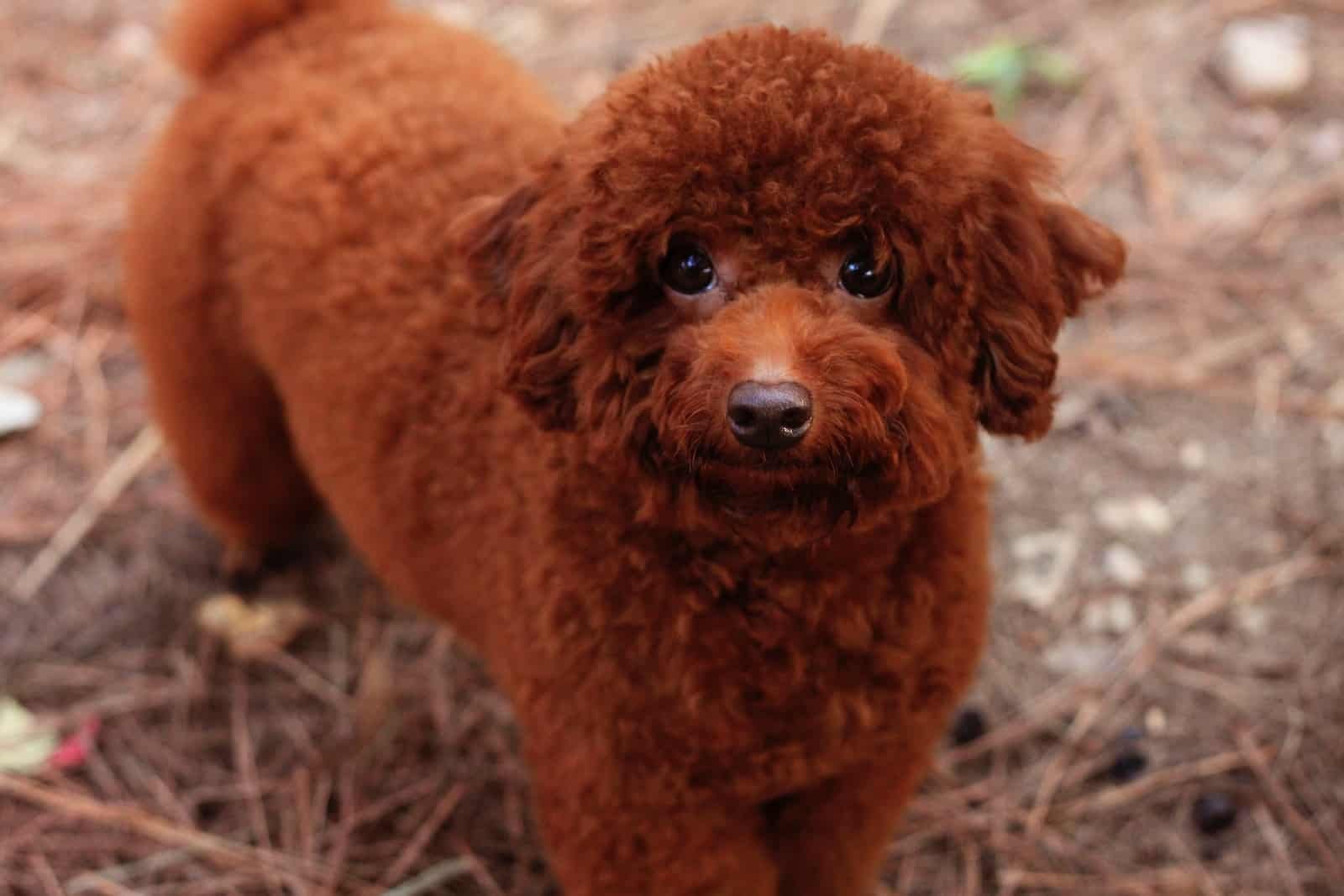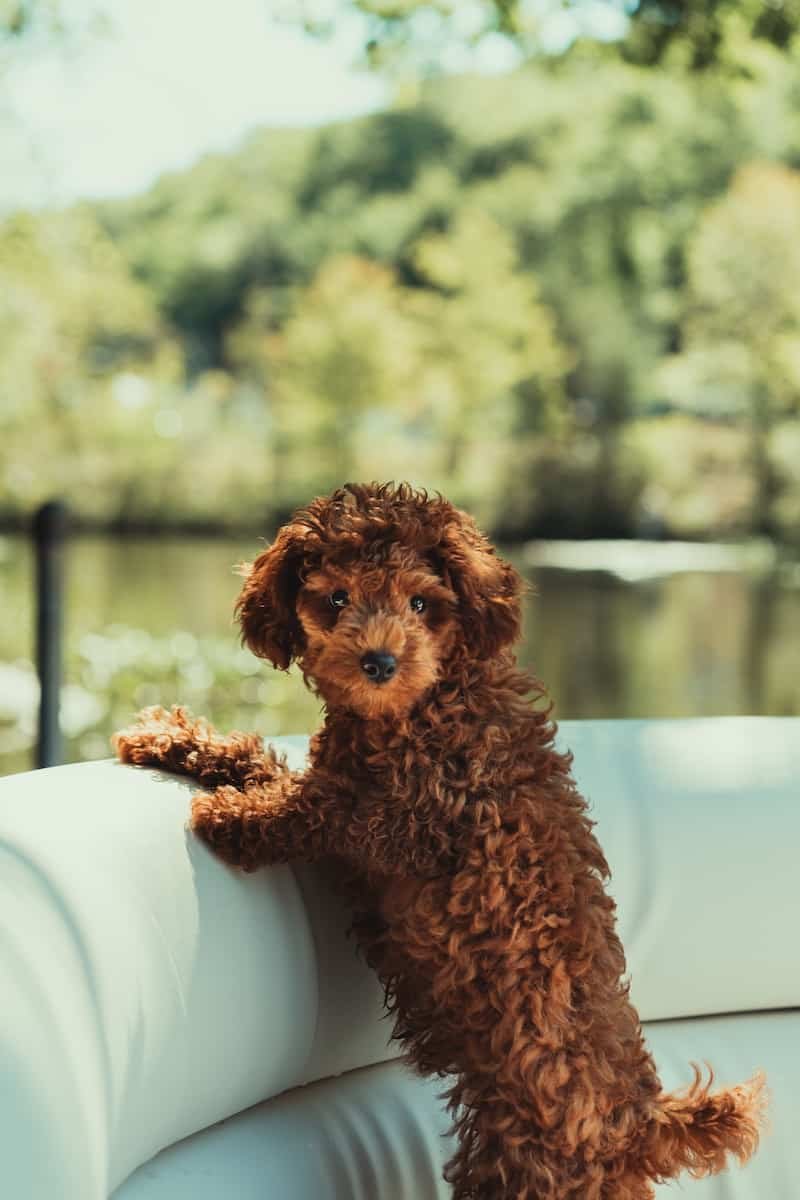
From Our Experience: As poodle enthusiasts who have worked with hundreds of poodle owners and rescue organizations over the years, we’ve gathered real-world insights that go beyond textbook knowledge. The information in this article reflects both professional expertise and hands-on experience with poodles of all sizes and temperaments.
Definition of a Poodle Small Breed
These varieties all have a unique curly coat that can range in color from solid white to black or apricot. They are loyal companions that are known for their intelligence and love of human companionship. Toy are usually around 10 inches tall, Miniature are 11-15 inches tall and Standard can be 15-22 inches tall. All three sizes require mental stimulation and regular exercise to maintain healthy energy levels and prevent adrenal gland issues. As long as they receive enough attention and care, these can live up to 16 years with few health conditions, such as retinal atrophy or other problems with vital organs. It is important to thoroughly research any parent breed before getting a puppy or popular type like the Shih Tzu.Characteristics of a Small Poodle Breeds
Poodles are known for their intelligence and loyalty. They are easy to train and make great family pets, as long as they receive enough attention and care from their owners. These varieties are very active and require regular exercise to stay healthy and keep boredom at bay. They can live up to 16 years and come in a variety of solid colors, though the most common are white, black, or apricot. Miniature Poodles range from 11 to 15 inches tall while Toy Poodles are usually around 10 inches tall and Standard Poodles range from 15 to 22 inches tall. With proper socialization, these smaller poodles get along well with other animals, making them a good choice for pet parents looking for an intelligent companion. It is important to remember that all poodle small breeds may have genetic health issues such as retinal atrophy or problems with vital organs, so it is important to talk to your vet about any concerns you may have.Standard Poodle
Standard Poodles are the largest of the poodle small breeds, usually ranging from 15 to 22 inches tall. These dogs are known for their intelligence and loyalty, making them great family pets. They require regular exercise, mental stimulation, and plenty of human companionship to stay healthy and happy. Standard Poodles have a long curly coat that requires frequent grooming to keep it at its best. It is also important to note that these varieties may be prone to certain health conditions, such as progressive retinal atrophy or problems with vital organs like the adrenal glands. With proper care and attention, Standard Poodles can live up to 16 years and will bring joy and love into any home they enter.Description of the Standard Poodle
The Standard Poodle is the largest of the poodle small breeds, typically ranging from 15 to 22 inches tall. Known for their intelligence and loyalty, they make great family pets and require regular exercise, mental stimulation, and plenty of human companionship to stay healthy and happy. They have a long curly coat that requires frequent grooming to keep it at its best. These breeds may be prone to certain health conditions, such as progressive retinal atrophy or problems with vital organs like the adrenal glands, but with proper care and attention, these dogs can live up to 16 years. Standard Poodles are known for being gentle yet energetic, making them a perfect companion for any pet parent.Height and Weight of the Standard Poodle
The Standard Poodle is the largest of the poodle small breeds, typically ranging from 15 to 22 inches tall and weighing between 40-70 pounds. As for their height, the smallest size of a standard poodle would be 15 inches and the tallest size is 22 inches. Depending on the size of your standard poodle, they can weigh anywhere from 40-70 pounds. It’s important to note that males tend to be larger than females, so you should expect your male standard poodle to be larger and weight than his female counterpart. When it comes to height and weight, a standard poodle may require more exercise and space than other smaller pets due to its size. Therefore, if you are considering getting a standard poodle as a pet, make sure you have enough room for them to move around and get plenty of exercise.Temperament of the Standard Poodle
The Standard Poodle is a highly intelligent and perceptive breed, making for a very loyal companion. This breed is an outstanding family pet and an exceptional show dog. Standard Poodles are highly active, energetic, and eager to please their owners. They are gentle, loving and want to be a part of the family. With proper training and mental stimulation, they can make great watchdogs, too.Their outgoing personalities also make them great therapy dogs. Standard Poodles need regular human companionship and thrive in the presence of their pet parent or family members. It’s important to remember that this breed needs plenty of exercise and mental stimulation, as they can become bored easily if not given enough attention or activity. Properly socializing your Standard Poodle will help them become more comfortable around people and other animals. The Standard Poodle is an excellent choice for those looking for a loving companion who’s easy to train and loves to experiment with their family members!Exercise Requirements for the Standard Poodle
The Standard Poodle is an active breed that needs plenty of exercise to stay fit and healthy. These dogs are naturally energetic and need at least an hour of exercise every day to burn off their energy, as well as mental stimulation as activities such as running, swimming, or playing fetch. They should also be taken for regular walks or jogs to maintain their physical health. If your Standard Poodle doesn’t get enough exercise, they may become bored and destructive, so it’s important to give them plenty of activity throughout the day. Training your Standard Poodle is also a great way to provide both physical and mental exercise for them. Taking them for walks in alternative places will help keep them stimulated and prevent boredom. It’s important to note that this dog may not do well with long periods of time alone, so make sure you have someone who can take care of your pup while you’re away!Miniature Poodles
Miniature Poodles are small, active dogs that make great family pets. Standing between 11 and 15 inches tall and weighing anywhere from 10 to 18 pounds, these pups have a cheerful personality that is sure to brighten up any home. With their curly coats in solid colors or mixed patterns, they make a fashion statement wherever they go! Miniature Poodles require regular exercise, both mental and physical, as well as plenty of human companionship. They should be taken on regular walks or runs to keep them healthy and happy. As with all breeds, Miniature Poodles can develop health issues such as adrenal gland problems or retinal atrophy if not properly cared for. To keep your pup in peak condition, it’s important to provide them with the proper nutrition and vet care for their vital organs. With the right care and attention from their pet parent, these charming little dogs can live an average of 12-15 years!Description of the Miniature Poodle
Miniature Poodles are small, active dogs that make great family pets. They can range in size from 11 to 15 inches tall and weigh between 10-18 pounds, making them a manageable size for most homes. Miniature Poodles come in a variety of colors and patterns, from solid colors to mixed. Their curly coats are easy to care for and require regular brushing and trimming. They need plenty of exercise, both physical and mental stimulation, to stay healthy and happy. As with all breeds, it’s important to provide your Miniature Poodle with proper nutrition and regular vet visits to ensure they are free from any health issues, such as retinal atrophy or adrenal gland problems. With the right care, they can live an average of 12-15 years!Height and Weight of the Miniature Poodle
Miniature Poodles are small and lively canines, typically measuring 11-15 inches in height and weighing 10-18 pounds. This makes them a manageable size for most homes, but it’s important to know their height and weight before you make a commitment to one. The standard size for a Miniature Poodles is approximately 11-15 inches tall and weighs between 10-18 pounds. Some Miniature Poodles may be slightly taller or shorter than this standard, so if you’re looking for an exact height and weight, it’s best to contact the breeder or rescue center where you plan on taking your new pup home. Miniature poodles should be fed according to their body weight and should have regular visits with their veterinarian to check for any health issues such as retinal atrophy or adrenal gland problems that can occur with certain periods of time. With the right care and nutrition, they will live an average of 12-15 years!Temperament of the Miniature Poodle
Miniature Poodles are known for their intelligence, loyalty, and playful nature. They are highly active dogs that need plenty of mental stimulation and exercise. Miniature Poodles are great family pets, as they love human companionship, but can also do well with other pets if given enough attention. Because of their small size, they can be great apartment dwellers as long as their energy levels are kept in check with regular walks or playtime outside. They have a high prey drive, so it’s important to provide them with an enclosed area where they can safely explore without running off after small animals. As far as grooming goes, these pups require regular brushing and trimming to keep their curly coat healthy and free of tangles. With the right care and attention, Miniature Poodles make a wonderful companion!Exercise Requirements for the Miniature Poodle
Miniature Poodles require daily exercise to stay healthy and happy. At least 30 minutes of brisk walking or running is recommended each day, but they can also benefit from activities such as fetch and agility training. It’s important to keep in mind that they are small dogs with short legs, so it’s best to avoid extended periods of high intensity activity. Swimming is a great way to get exercise without putting strain on their joints and muscles, and it’s even more fun for them! It’s also important for pet parents to look out for signs of fatigue and take breaks when needed. With the right level of activity, Miniature Poodles will stay fit and healthy for years to come!Toy Poodles
The Toy Poodle breed has a height of less than 10 inches and a weight range of 6-10 pounds. Their coat is curly and can come in a solid or mixed color, and regular grooming is necessary for coat maintenance. Toys are known for being intelligent and alert, making them great companions for those seeking a playful pet. They are an active breed and need daily mental stimulation as well as physical exercise. Since they are prone to certain health issues, such as retinal atrophy or adrenal gland problems, it’s important to monitor their health closely by visiting the vet regularly. Toy Poodles make for loyal companions who thrive on human companionship and love being part of the family. With their energy levels, intelligence, and affectionate nature,






